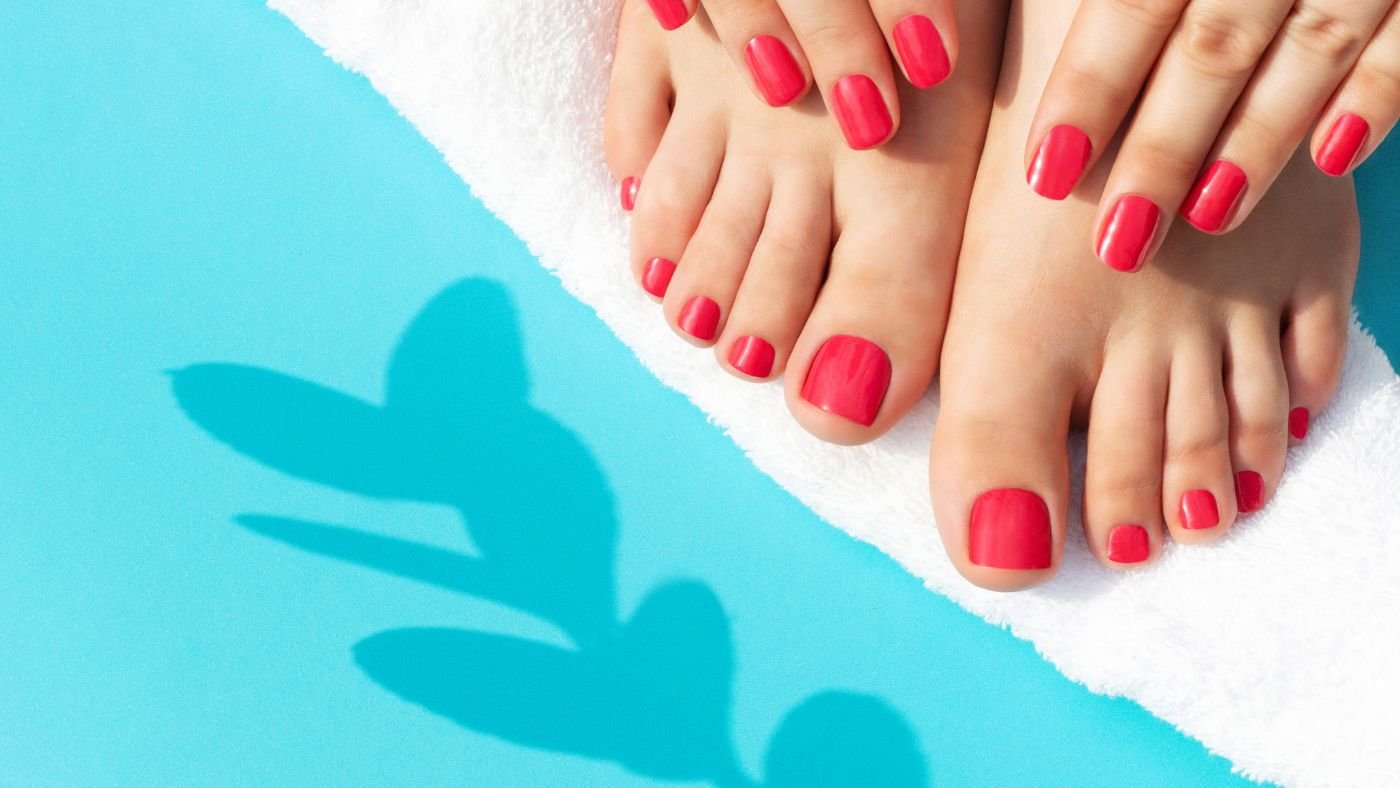Cold fingers are a well-known situation for everyone. Your fingers and toes sometimes get cold even when the environment is warm. This can be unsettling and raises many questions. Why does this happen? First of all, it is important to understand that your body works to maintain the temperature of the main parts of the body, such as the heart and lungs. When the cold affects your body, blood vessels in the periphery, including the hands and feet, constrict to reduce heat loss.1
This reaction, called vasoconstriction, helps conserve heat, but it also reduces blood flow to the extremities, which can make them feel cold. This process is natural and necessary, but sometimes it can be too intense or mismanaged, causing discomfort and even a feeling of coldness.
Sometimes cold fingers and toes can be caused by other medical conditions, such as Raynaud's phenomenon, in which blood flow to certain parts of the body is severely reduced. This condition can be caused by both physical and emotional causes and can occur even in warm environmental conditions.
Cold fingers and toes, what science says
When your fingers or toes are cold, it's a signal that your body's thermoregulation is trying to adapt to the environment. Scientists study these phenomena and find out that various factors are involved. Changes in hormone levels, circulatory conditions, and even genetics can affect how sensitive your limbs are to the cold.
Nervous system response is also important: your sympathetic nervous system responds to cold, causing vasoconstriction. These processes are complex and individual, so everyone's experience with cold can be different. This explains why some people can walk barefoot in the snow, while others get cold fingers and toes even in moderate cold.
Hormonal changes, especially in women, can affect the response of blood vessels to cold. Menstrual cycle, pregnancy and menopause can change how your body reacts to changes in temperature. These physiological processes are important to evaluate when looking for ways to deal with freezing extremities.

Factors leading to cold fingers and toes
A common cause of cold fingers and toes can be poor blood circulation. This can happen for a variety of reasons, including a sedentary lifestyle, smoking, high blood pressure or cholesterol levels. Circulatory disorders can cause not only discomfort, but also long-term health problems, so it is important to find ways to how to improve blood circulation.
Nutrition also plays an important role. Lack of certain vitamins and minerals, especially iron, magnesium and ivitamin B12, blood circulation may be impaired and heat production may decrease. Make sure your diet is balanced and rich in nutrients to support a healthy circulatory system.
Stress and tension can also affect the condition of your blood vessels. Prolonged stress causes chemical changes in your body that can promote vasoconstriction and, as a result, a chilling effect on the extremities. Learning to manage stress, relaxation techniques, and regular exercise can help relax blood vessels and improve blood flow.
Interesting facts about freezing limbs
Did you know that cold fingers can be related not only to the temperature of the environment, but also to your emotional state? Emotional stress and anxiety can trigger a sympathetic nervous system response that causes vasoconstriction and coldness in the fingers and toes. So, your emotional state may have more of an effect on your limb temperature than you might realize.
Also, some studies show that women are more likely to complain of cold extremities than men. This may be due to hormonal differences and different distribution of fat in their bodies. Women's skin is usually thinner and the fat layer is less, so thermal insulation is less effective.
An interesting fact is that the sensation of cold in your extremities can be transmitted through your genetic code. In other words, if your parents or grandparents suffered from cold hands and feet, there is a higher chance that you may also have this problem. Genetics affect the structure and function of your circulatory system, so keep this information in mind when trying to understand your body's reactions.

Why do your limbs get cold when the house is warm?
Sometimes your fingers and toes can feel cold even in warm home conditions. This may seem strange, but there are several reasons why this happens. For example, if you sit still for a long time, blood circulation can slow down, which leads to a feeling of coldness in the extremities.
Central heating can also dry out indoor air, and dry air can cool the surface of the skin and make you feel cold. Also, if the temperature in your home is inconsistent or there are drafts in the room, this can cause periodic cooling of the extremities.
Your body's metabolism can also affect how you feel your temperature. A low metabolic rate can mean that your body is not producing enough heat, so you may feel cold even in warm surroundings. It is important to understand all these factors in order to find the most effective ways to deal with this problem.
Cold fingers are common and it's your extremities
Sometimes you may find that even though your body is warm, your fingers and toes are still cold. This can be confusing, but it's actually quite common. Your body decides how to heat the main organs, such as the heart and brain, so less important parts of the body, such as the limbs, can become colder.
This is a natural protective reaction by which your body tries to keep vital organs functioning even in low ambient temperatures. However, if this process becomes too intense, or if your limbs get cold even in warm weather, it may mean that you need to pay attention to your health and lifestyle.
Do not ignore this phenomenon, especially if it causes you discomfort or interferes with daily activities. This could be a sign that your circulatory system is not getting enough support, or that there are other medical conditions that should be investigated. Therefore, if you notice that your limbs are often cold, it is important to consult a health care professional.

Recognizing the symptoms of cold fingers and toes
Symptoms of cold fingers and toes can vary depending on individual health conditions and environmental factors. These symptoms usually include feeling cold, numbness, tingling, or even pain. If these sensations repeat or intensify, it may indicate that your extremities are not warm enough.
Sometimes the extremities may become lighter or even blue. This is a vascular reaction to cold. If you notice a change in skin color, this is a clear signal that your toes or feet are not heated enough. In addition, if your extremities remain cold for a long time even after you have removed the factor that caused the cold, this may also indicate health problems.
It is important to monitor these symptoms and their frequency and intensity. If they become frequent or interfere with your quality of life, see a doctor who can investigate possible causes and advise you on how to proceed in such a case.
Take immediate action when your fingers keep getting cold
When your routine is disrupted by freezing toes, it's important to take immediate steps to increase their warmth and circulation. One of the simplest ways is to regularly move your arms and legs. Active finger and foot exercises can help restore blood flow and warmth.
Warm baths or compresses can also help revive freezing limbs. But remember that temperature changes should be gradual so as not to cause additional stress on blood vessels. If the fingers get cold due to external cold, it is important to warm them properly and protect them from further cold.
Make sure you wear warm enough clothes, especially in winter or on cool evenings. Gloves or socks with heat-retaining properties should be kept in an accessible place so that you can quickly put them on at the first sign of a cold.
Finally, if the feeling of coldness is constant and accompanied by other symptoms, it is worth consulting a doctor. This can be a sign of certain health problems that should be addressed immediately. A doctor can prescribe appropriate tests and treatments to help you regain comfort and prevent more serious health problems.

What to do when your limbs are constantly freezing
If you notice that your limbs are freezing regularly, it is important to take long-term preventive measures. Include foods that promote blood circulation in your daily diet, such as nuts, seeds, seafood and fresh vegetables. Also, don't forget to drink enough fluids - this helps maintain good blood circulation.
Physical activity is another important factor. Regular exercise, especially cardio, gets the heart pumping and improves circulation throughout the body. Even simple daily walks can have a positive effect. It is also worth trying to exercise your hands and feet, which helps prevent them from getting cold.
Sleep and rest are also important. Make sure you get enough and quality sleep. Stress and overwork can impair blood circulation, which in turn can lead to cold extremities. Find ways to reduce stress, this will help not only to warm your limbs, but also improve your general well-being.
The most important nutrients when there are cold fingers
When you often find yourself in a situation where you have freezing fingers even in moderate heat conditions, this may signal malnutrition or a lack of certain nutrients. Omega-3 fatty acids, iron, magnesium and B vitamins are extremely important for maintaining warm fingers and general body temperature.
Omega-3 fatty acids, found in fish, flaxseeds and nuts, help improve circulation, which is essential for warm limbs.
-
Sale Product on saleSUPER OMEGA-3 - Norwegian fish oil with Omega-3, 100+30 capsules
67,90 €Original price was: 67,90 €.47,50 €Current price is: 47,50 €.Rated 5.00 out of 5 based on 5 customer ratings
Iron, which can be obtained from red meat, spinach and lentils, is vital for blood production, and its deficiency can lead to anemia and cold extremities.
Magnesium, found in avocados, bananas and dark chocolate, relaxes blood vessel walls, improving blood flow.
Meanwhile, B vitamins, especially B12, found in meat, dairy and some plant-based foods, are important for nervous system health, which can also affect the sensation of warmth in your extremities.
By including these nutrients in your daily diet, you can help ensure that your toes stay warm and healthy even on the coldest days.
What is useful to have to avoid frostbite
In order to avoid frostbite, it is especially important to ensure that you are fully equipped. Gloves and socks made of heat-insulating materials such as wool or special synthetic fibers can provide the necessary protection on cold days. I wholeheartedly recommend investing in quality insulated gloves and socks that help keep your body warm.
In addition, it is important to pay attention to the footwear. On cool or cold days, choose high-quality insulated boots that keep moisture and cold out. The right footwear helps prevent cold feet and related problems such as frostbite.
Finally, don't leave your health to chance - buy warm blankets and heating pads that can be used at home or at work whenever you feel your limbs getting cold. These simple remedies can do wonders for extra warmth and comfort.

FAQ Section: Cold Fingers and Cold Limbs
Why do my fingers and limbs get cold even when the weather is not cold?
Cold fingers and extremities can be caused by a variety of reasons, including poor circulation, Raynaud's phenomenon, nerve damage, or even certain medical conditions such as hypothyroidism or anemia.
How can blood flow to cold limbs be improved?
You can improve circulation by exercising regularly, avoiding tobacco products, maintaining a healthy weight, eating foods that promote circulation (such as those rich in omega-3 fatty acids), and wearing warm clothing.
Could freezing fingers be a sign of a serious health problem?
Treatment options depend on the cause of the frostbite. These may include medications that improve circulation, lifestyle changes, wearing warm clothing, and, in some cases, surgical intervention.
Are there any home remedies to warm up freezing limbs?
Yes, taking a warm bath, heating pad, or wearing warm clothing can help warm up cold limbs. A hand and foot massage can also help to stimulate circulation.
What treatments are there for frostbite?
Treatment options depend on the cause of the frostbite. These may include medications that improve circulation, lifestyle changes, wearing warm clothing, and, in some cases, surgical intervention.
Conclusion
Cold fingers can be uncomfortable and sometimes a sign of a serious medical condition. Awareness of the condition, prompt action, long-term prevention strategies, and the use of appropriate materials are essential steps in protecting yourself from the problems caused by the cold. Remember that your health is important, and if you are experiencing constant coldness in your extremities, do not hesitate to consult a healthcare professional.
It doesn't matter if the feeling of cold in your hands and feet is temporary or permanent, it is important to know how to properly take care of your body and avoid frostbitten limbs. If you have questions or doubts, you can always contact experienced specialists who will help you find the best solutions. So, don't ignore the cold feeling in your fingers and take action today!












